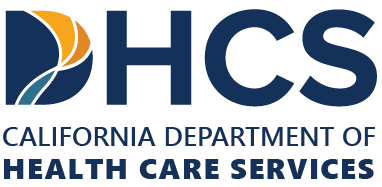 The following was contributed to The Pathway Program by Kim Miller, is a professional blog writer and recovery and trauma clinician. She is an LCSW, writer, speaker, and Somatic Experiencing EMDR practitioner Licensed in Substance Abuse and Mental Health. She offers a full range of cutting edge services in her private practice in Tempe, AZ. You can read more of Kim’s content by visiting her online at KimMillerCounseling.com.
The following was contributed to The Pathway Program by Kim Miller, is a professional blog writer and recovery and trauma clinician. She is an LCSW, writer, speaker, and Somatic Experiencing EMDR practitioner Licensed in Substance Abuse and Mental Health. She offers a full range of cutting edge services in her private practice in Tempe, AZ. You can read more of Kim’s content by visiting her online at KimMillerCounseling.com.
The optimal length of stay in a substance abuse treatment program is one of the most common questions I get. The intent of the question, of course, is to pick a good treatment option. Many times, family members have either just discovered that their adolescent or young adult is using, or they are operating within an extremely limited time frame. We know that a substance user’s window of “willingness” can sometimes only last a few hours. This is an extremely stressful position for families.
The goal of this article will be to provide some insight into good treatment options in light of current evidence and research on the topic.
Length of stay is sometimes referred to as “LOS” and the number of days of treatment may be referred to as “dosage”, terminology which echoes studies on medical services. From a data lens there is a desire to observe and measure courses of treatment to discover the precise point at which it begins to translate into results. Like a patient in a hospital getting a dose of a medication, there have often been certain trials that provide data in terms of treatment amount and what overall length of stay is expected in a facility or course of treatment. While the typical rationale for examining data is to assess a treatment’s level of safety, another reason is to discover how long it takes for results to be achieved. Research then looks for a point at which a given treatment begins to take effect and also when it can be expected to provide enough momentum to carry over lasting changes or results. It makes sense intuitively that treatments that are too short term could be rendered ineffective and thus a treatment experience would be essentially a waste of time.
Substance abuse treatment is a complex discussion involving a myriad of considerations:
• Physical healing of the brain and body
• Emotional and behavioral rehabilitation
• Educational and vocational factors
• Financial considerations
• Recreation
• Social and family considerations
• Spiritual life
• …and many more!
With such a bewildering number of factors affecting a person’s recovery, it can be quite complex to try and measure the effectiveness of a treatment program. Most the time, with the large number of treatment centers and types of treatment available it can be hard to differentiate what to look for in a program. From a numbers perspective, researchers are often trying to determine the most helpful form of treatment. Clients and family members of substance abusers approach the problem in a more practical sense—they are trying to find the right treatment from a sea of different options and are having to develop a plan on limited resources and in a limited timeframe.
By glancing at different treatment center experiences, you will learn what tools are being provided and how long a client is being given time to integrate new solutions. You will learn about the plans a treatment center implements to practice a new way of living, develop accountability, and maintain recovery long-term. Take the example of learning a new trade—a prospective student will look at schools, research if there is adequate education, tools, teachers, and time to learn new skills. They will also discover how the program would fit someone’s situation and own unique learning style.
Furthermore, they would want to know what the plan is to help students to successfully integrate their newfound knowledge into their lives. Most importantly, they will learn how the tools actualize into a successful long term outcome—like a viable, steady career. An eager student may be need to know the realistic minimum length of time needed to securely learn a new profession/skill in order for it to help them achieve their vocational goals. While the metaphor may seem simplistic, there are a number of parallels.
Length of treatment is part of the picture as we look at options in the treatment world. The bottom line is that if a program’s program is too short, the quality of treatment doesn’t matter much. We need to expose participants to an appropriate length of treatment before it becomes effective.
Turning to sources of research that have provided successful outcomes in tests can be a good resource. Repeatedly measuring ongoing studies on treatment outcomes can help inform this topic. The National Institute of Drug Abuse (NIDA) and the National Institute of Health (NIH) are fantastic resources for this type of information.
To get down to bottom line, The NIH website mentions length of stay as one of the most important factors stating that 90 days should be a minimum length of treatment stay. The healing that needs to take place in the brain and body and in all life spheres of a client’s life in recovery is not an overnight matter.
Why is Length of Stay Important? The Early Recovery Process
Massive shifts happen in the first 30 days making it possible for the brain and body to begin to reset. The next few months incorporate skill building, recovery planning, relapse prevention, new ideas for building a different life, functional goal setting, and developing higher standards in underdeveloped areas. In some cases, participants may even take the first 90 days of treatment deciding whether or not they want to remain clean due to the characteristic denial process that accompanies addiction.
While everyone’s treatment course is unique, the minimum number of days therefore suggested is at least 90 days.
Additionally, it is highly recommended that treatment be followed up with ongoing aftercare and support. Leaving treatment, most clients will relapse or regress within the first month without a supportive plan. This data trend mirrors those of many medical illnesses—the lack of ongoing support leads to regression. Treatment options that provide continuation of care past 90 days as clients are “stepping down” will find the best results overall.
This aftercare process should include group work, individual counseling, 12-step meetings or support group meetings, after-care accountability groups, and opportunities to socially engage with others. Support through ups and downs in at least the first 12-24 months is extremely important. Therefore, it’s almost equally important to look at what is occurring after a primary treatment episode. Programs that include ongoing aftercare, support group or community engagement, family work, and consistent accountability consistently have the most positive results.
To put it into “treatment language,” it is critical to have the experience of getting to continue in PHP or IOP group work after discharge from treatment. This provides extra opportunities to receive individual counseling, attend aftercare accountability groups, receive family programming, support group meetings, and experience socially enriching and chemical-free activities. Programs that include these types of support will hold the highest outcome scores in relapse prevention and life satisfaction.
Much like someone that enters a hospital for a chronic illness, there is plenty of work to do to continue to stabilize health after discharge from substance abuse treatment.
Matching clients with Appropriate Treatment Approaches
The other relevant factor that is presented by NIDA is that people are matched well with a treatment approach. For example, young adults and adolescents tend to fare better when matched with a program that is tailored to their needs:
• Due to their heavy reliance on peers as part of a normal life developmental stage, they may benefit from a program with developmentally appropriate tools and tasks and clientele.
• They respond well to social activities and fun age-appropriate activities.
• They have hurdles to climb too that perhaps older adults do not experience when getting sober.
• There are many learnings they have never achieved due to their age deficit and so having a program that continues to walk with them through these developmental stages is helpful.
Intuitively, matching people with the right treatment approach seems makes sense. For sake of humor, let’s say you sent someone who is an older war veteran to a young adult outpatient program. You probably intuitively understand how that scene would not play out very well. Matching clients as appropriately as possible to a treatment philosophy and approaches is vital. While there may not be a perfect fit for everyone, there is an obvious need to think critically at choosing the best possible fit. Adolescents and young adults may need more specialized treatment and staff trained in this unique life stage and the same goes for other populations.
In summary:
• Content of treatment and matching clients to the appropriate treatment program for their developmental stage is important.
• Aftercare and what occurs after primary treatment is also critical. It’s important to look for programs that include a robust aftercare program.
• Programs that include ongoing aftercare, support group or community engagement, family work, and consistent accountability seem to have the highest positive results.
• Longer treatment stays with support services lead to better outcomes statistically. It is recommended that treatment last at least 90 days.
Rehabilitation and all the parts of the healing journey take time. Most people begin to see major shifts in thinking and engaging after a year of recovery. Many people in the recovery field or in 12-step support groups consider the first 1-3 years predictive of the “newcomer” experience. Programs that are able to offer longer term options to provide support through not only the initial treatment stages but continue to provide aftercare support for up to several years after treatment provide an important platform for the recovery process. Also, there are certain specialty groups that have a need for extra care and matching people with appropriate treatment approaches and philosophies is important on outcomes. Adolescent and young adult clients have life stages and experiences that haven’t even occurred yet due to not reaching full adulthood. They are reaching somewhat complex life transitions but at times devoid of many skills. The importance of matching clients with the right treatment approaches is therefore vital and important to treatment outcomes as well. Programs that continue to provide ongoing longer term aftercare supports, such as supportive group work or social functions provide opportunities for socialization, and creating new social or family dynamics. Ongoing counseling services, family group work, and accountability are key.
On another note, to make matters more complicated, sometimes clients will need multiple treatment stays. While research shows that longer lengths of stay and multiple treatment stays often result in higher success rates if a client is even moderately motivated. The bottom line is clients and/or family members have to plan wisely and often quickly or they run out the clock and their bank accounts. Evidence from relevant studies can help inform this process. Recovery is very achievable but it is a long, slow, deliberate journey, not a quick fix.





